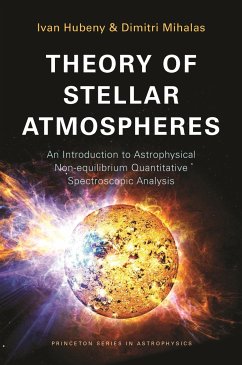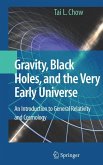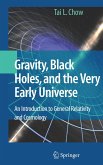This book provides an in-depth and self-contained treatment of the latest advances achieved in quantitative spectroscopic analyses of the observable outer layers of stars and similar objects. Written by two leading researchers in the field, it presents a comprehensive account of both the physical foundations and numerical methods of such analyses. The book is ideal for astronomers who want to acquire deeper insight into the physical foundations of the theory of stellar atmospheres, or who want to learn about modern computational techniques for treating radiative transfer in non-equilibrium situations
"Theory of Stellar Atmospheres will become 'The Book' in this field, supplanting all others. Every serious student and researcher in astrophysics should own a copy. Hubeny and Mihalas constitute the dream team for this subject, having worked in the area for their entire careers and made fundamental and important contributions."--James M. Stone, Princeton University








